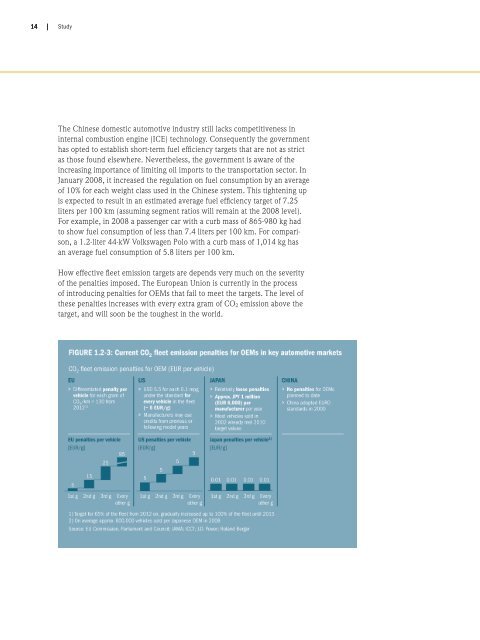Powertrain 2020 - The Future Drives Electric (PDF ... - Roland Berger
Powertrain 2020 - The Future Drives Electric (PDF ... - Roland Berger
Powertrain 2020 - The Future Drives Electric (PDF ... - Roland Berger
Create successful ePaper yourself
Turn your PDF publications into a flip-book with our unique Google optimized e-Paper software.
14 |<br />
Study<br />
<strong>The</strong> Chinese domestic automotive industry still lacks competitiveness in<br />
internal combustion engine (ICE) technology. Consequently the government<br />
has opted to establish short-term fuel efficiency targets that are not as strict<br />
as those found elsewhere. Nevertheless, the government is aware of the<br />
increasing importance of limiting oil imports to the transportation sector. In<br />
January 2008, it increased the regulation on fuel consumption by an average<br />
of 10% for each weight class used in the Chinese system. This tightening up<br />
is expected to result in an estimated average fuel efficiency target of 7.25<br />
liters per 100 km (assuming segment ratios will remain at the 2008 level).<br />
For example, in 2008 a passenger car with a curb mass of 865-980 kg had<br />
to show fuel consumption of less than 7.4 liters per 100 km. For comparison,<br />
a 1.2-liter 44-kW Volkswagen Polo with a curb mass of 1,014 kg has<br />
an average fuel consumption of 5.8 liters per 100 km.<br />
How effective fleet emission targets are depends very much on the severity<br />
of the penalties imposed. <strong>The</strong> European Union is currently in the process<br />
of introducing penalties for OEMs that fail to meet the targets. <strong>The</strong> level of<br />
these penalties increases with every extra gram of CO 2 emission above the<br />
target, and will soon be the toughest in the world.

















